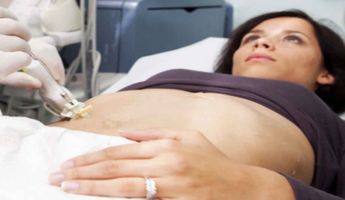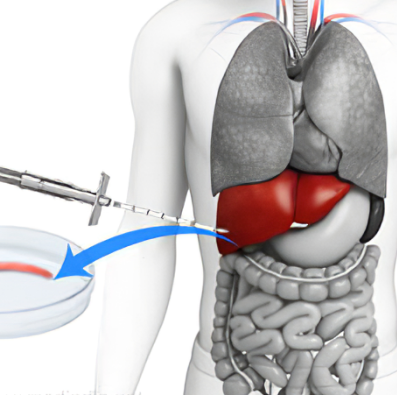Liver Biopsy in Tokyo
Search and Compare the Best Clinics and Doctors at the Lowest Prices for Liver Biopsy in Tokyo

Find the best clinics for Liver Biopsy in Tokyo
No pricing info available
Morocco offers the best prices Worldwide
Price: $ 50
The University Hospital of Tokyo, located in Chome Yushima, Tokyo, Japan offers patients Liver Biopsy procedures among its total of 286 available procedures, across 30 different specialties. Currently, there's no pricing information for Liver Biopsy procedures at The University Hospital of Tokyo, as all prices are available on request only. There is currently a lack of information available on the specialists practicing at the Hospital, and they are not accredited by any recognized accreditations institutes
WHY US?
At Medijump, we're making medical easy. You can search, compare, discuss, and book your medical all in one place. We open the door to the best medical providers worldwide, saving you time and energy along the way, and it's all for FREE, no hidden fees, and no price markups guaranteed. So what are you waiting for?

Free

Best Price

Widest Selection

Risk-Free
What you need to know about Liver Biopsy in Tokyo

A liver biopsy is a medical procedure performed to collect a small piece of liver tissue, so it can be examined closely under a microscope for signs of disease or damage. This procedure is usually carried out to detect the presence of abnormal cells in the liver, such as cancer cells. Your doctor may suggest a liver biopsy if the result of your blood tests or imaging studies shows that you might have a problem in your liver. Although biopsies are usually associated with cancer, it does not necessarily mean that you have cancer if your doctor recommends this test.
A liver biopsy is most often used to:
-
Identify the cause of unexplained jaundice (yellowing of the skin), persistent abnormal liver blood tests (liver enzymes), a liver abnormality found on CT scan, ultrasound, or nuclear scan, as well as unexplained enlargement of the liver
-
Determine the severity of the liver disease
-
Grade and stage hepatitis B and C
-
Monitor the liver after a liver transplant
-
Help develop the best treatment for liver damage or disease.
What does the Procedure Involve?
Laparoscopic biopsy
Laparoscopic biopsy uses a laparoscope, which is a tube-like instrument with a tiny camera attached to it, to collect the sample.
Before the laparoscopic biopsy, you will be given a general anesthetic. Your doctor will create several tiny incisions in your abdomen. The laparoscope and special surgical tools are inserted through these incisions. The camera within the laparoscope projects images on a monitor. Your doctor uses these images to guide the surgical tools to your liver to take some tissue samples. When the samples are taken, the tools are removed and the incisions are closed with stitches.
Transjugular biopsy
To start the procedure, a small numbing medication is applied to one side of your neck. Your doctor will then create a small incision at the numbed area and then inserts a thin, flexible tube through the incision into your jugular vein. The tube is then guided through the jugular vein and into the hepatic vein (the large vein in your liver). Once the tube reaches your hepatic vein, your doctor will inject a contrast dye into the tube and creates a series of X-ray images. The contrast dye will show up in the vein, which enables your doctor to clearly see the hepatic vein. Afterward, a biopsy needle is inserted through the tube to take the liver sample.
Percutaneous biopsy
Percutaneous biopsy, also known as a needle biopsy, is the most common type of liver biopsy. It involves the use of a thin needle through your abdomen and into the liver. To start the procedure, your doctor will tap your abdomen or use ultrasound images to locate your liver. Ultrasound is sometimes used to guide the needle into the liver. Your doctor will apply a numbing medication and then creates an incision near the bottom of your ribcage. The needle is then inserted through the incision and your doctor will remove a small tissue sample.
How Long Should I Stay in Tokyo?
You can leave the hospital on the same day as the procedure. However, since it takes around a week until the result of your biopsy comes back from the pathology lab, plan to stay in Tokyo for about 7 days. Once the result is ready, you will have to attend a follow-up appointment to discuss the results with your doctor. If everything is fine, you will be allowed to travel home afterward.
What's the Recovery Time?
You need to take it easy and rest for at least 1 day. You should be able to resume your normal activities after a few days. However, avoid strenuous activities and heavy lifting for a week following your liver biopsy.
What About Aftercare?
Your doctor will give you detailed aftercare instructions that you need to follow. In general, you need to avoid taking aspirin or products that contain aspirin for a week. Your doctor will prescribe pain medication to help with your discomfort, make sure to take them as directed.
What's the Success Rate?
A liver biopsy is a safe procedure with high success and accuracy rates. Although it is safe, there are still some possible risks and side effects that you will need to be aware of. These include:
-
Bleeding
-
Pain
-
Infection
-
Injury to a nearby organ.
A transjugular biopsy carries very rare risks of hematoma in the neck, puncture of the lung, temporary voice problems, and temporary problems with the facial nerves.
Are there Alternatives to Liver Biopsy?
In some cases, your doctor may be able to make a diagnosis of liver disease based on physical examination, medical history, and blood testing. Doctors may also use imaging techniques as an alternative to liver biopsy. The simplest imaging technique that’s used is elastography (mostly known as FibroScan), which is similar to an ultrasound and can measure the stiffness of a liver.
What Should You Expect Before and After the Procedure
Before a liver biopsy, you may experience unexplained symptoms and your doctor may not be able to make an accurate diagnosis of your problem. After the procedure, your doctor should be able to make a diagnosis and know for sure the condition of your liver. The results will allow you and your doctor to create a treatment plan.
Whilst the information presented here has been accurately sourced and verified by a medical professional for its accuracy, it is still advised to consult with your doctor before pursuing a medical treatment at one of the listed medical providers
No Time?
Tell us what you're looking for and we'll reachout to the top clinics all at once
Enquire Now

Popular Procedures in Tokyo
Prices Start From $35,013

Prices Start From $22,731

Prices Start From $39

Recommended Medical Centers in Tokyo for Liver Biopsy

- Interpreter services
- Translation service
- Religious facilities
- Medical records transfer
- Medical travel insurance
- Health insurance coordination
- TV in the room
- Safe in the room
- Phone in the room
- Private rooms for patients available

- Interpreter services
- Translation service
- Religious facilities
- Medical records transfer
- Medical travel insurance
- Health insurance coordination
- TV in the room
- Safe in the room
- Phone in the room
- Private rooms for patients available

- Interpreter services
- Translation service
- Religious facilities
- Medical records transfer
- Medical travel insurance
- Health insurance coordination
- TV in the room
- Safe in the room
- Phone in the room
- Private rooms for patients available

- Interpreter services
- Translation service
- Religious facilities
- Medical records transfer
- Medical travel insurance
- Health insurance coordination
- TV in the room
- Safe in the room
- Phone in the room
- Private rooms for patients available

- Interpreter services
- Translation service
- Religious facilities
- Medical records transfer
- Medical travel insurance
- Health insurance coordination
- TV in the room
- Safe in the room
- Phone in the room
- Private rooms for patients available

- Interpreter services
- Translation service
- Religious facilities
- Medical records transfer
- Medical travel insurance
- Health insurance coordination
- TV in the room
- Safe in the room
- Phone in the room
- Private rooms for patients available

- Interpreter services
- Translation service
- Religious facilities
- Medical records transfer
- Medical travel insurance
- Health insurance coordination
- TV in the room
- Safe in the room
- Phone in the room
- Private rooms for patients available

- Interpreter services
- Translation service
- Religious facilities
- Medical records transfer
- Medical travel insurance
- Health insurance coordination
- TV in the room
- Safe in the room
- Phone in the room
- Private rooms for patients available
Liver Biopsy in and around Tokyo
About Tokyo
Tokyo is Japan’s capital. It is one of the 47 prefectures of the country. There are over 13.9 million people estimated to live there. The capital is a giant metropolis that offers tourists the chance to indulge in the traditional Japanese culture, eat in one of its delicious restaurants, or learn more about modern life. One of the most popular sights in Tokyo is the cherry blossoms that fill the streets and parks with pink petals in Spring. The soft pink petals are an icon of the country.
Among the 30 million people who traveled to Japan in 2018 are medical tourists. With a vast range of high-quality medical services and facilities, Tokyo has a large contribution to the country’s growing medical tourism. it has numerous public and private hospitals that offer outstanding healthcare. These hospitals are equipped with cutting-edge medical technology and highly qualified doctors. Many doctors and medical professionals speak fluent English.
As Japan was ranked the highest in five-year survival rates of lung cancer and esophagus cancer patients from 2010 to 2014, the most sought-after medical procedure is Tokyo oncology treatments. There are many medical facilities in the area that are JCI-accredited and offers a wide range of treatments including Breast Augmentation procedures.
Popular Areas in Tokyo
Tokyo is sprawling with many extraordinary attractions and sights. It is the perfect mixture of traditional and modern. From temples, shrines, futuristic infrastructure, robot restaurants, booming nightlife, nature to anime, all coexist peacefully here.
To see a beautiful city view, climb up the Tokyo Skytree, Tokyo Metropolitan Government Building, and Tokyo Tower. Visit Tokyo’s oldest temple, Sensoji Temple in Asakusa, and learn more about the history and traditions. The temple is surrounded by numbers of Japanese restaurants that serve authentic dishes including Sushi, Tempura, and Sukiyaki. Tourists can also try a variety of traditional activities like wearing a Kimono dress.
Not far from Asakusa is Ueno, where one of the biggest parks in Tokyo is located. Ueno Park is the perfect place to spend a beautiful day. The park consists of a zoo, museums, historical monument, and green spaces. To try out Tokyo’s futuristic and modern side, come to the first digital art museum in the world, MORI Building DIGITAL ART MUSEUM — teamLab Borderless. Experience a unique interactive art with the latest technology and immerse in multiple digital art exhibitions.
Shopping is also one of the main attractions in Tokyo. Tourists most favorite places to shop are Ginza, Nakamise Shopping Street, as well as Takeshita Street and Omotesando in Harajuku. For anime or Disney fans, attractions such as Ghibli Museum, Fujiko F Fujio Museum, Pokemon Center, Tokyo One Piece Tower, Nakano Broadway, Akihabara, Tokyo Disneyland, and Tokyo Disney Sea are some of the best places to visit.
Weather and Climate in Tokyo
Tokyo is a year-round destination because it has temperate weather with four distinct seasons.
- Summer is hot and humid with an average temperature of 21 to 32 °C. Sometimes it can get as high as 40 °C. this season starts in June and ends in August. June sees a lot of rainfall while August is the start of typhoon season.
- Autumn lasts from September to November. The typhoon season peaks in November. The weather during this season is mild with less humidity. It is pleasantly warm in October, making it one of the best times to travel in Tokyo.
- Winter comes in December and lasts until February. The weather is dry and sunny with an average temperature of around 2 °C to 12 °C. The temperature rarely drops below 0 °C. There is very little snow in Tokyo.
- Spring starts in March to May. The temperature increases gradually during this season, with an average of 13 °C in the afternoon and 5 °C in the morning and evening. The sky is mostly clear during this season and it is also one of the best times to visit Japan because of the cherry blossoms.
Getting Around in Tokyo
Located around 60km east of central Tokyo, Narita International Airport is the main international gateway to Tokyo. The airport serves both domestic and international flights to almost every major city in the world. Budget airlines such as Jetstar Japan, Peach, and Eastar Jet operates flights from this airport.
Rail, bus, taxi, or car rental are available for tourists to reach the city center from Narita Airport. There are several train types to choose from. The Main Line (regular commuter train) in Keisei Line is the most affordable one, it costs around ¥1,190 to ¥1,230 ($10 to $11.3) and it connects with the Toei Asakusa Subway Line and the Yamanote Line. For faster travel, choose the Skyliner train that takes only 36 minutes to Nippori. This train costs around ¥2,470 ($22.7). There is another train known as the Sky Access Express train that offers better access to Tokyo. A trip to Asakusa takes about 58 minutes and costs around ¥1,290 ($11.9).
A taxi might not be the best option since it’s very expensive, it usually costs over ¥20,000 ($184) from Narita Airport to Tokyo. The more affordable option is the shared minibus which cost ¥6,180 ($57) per person. Buses are comfortable, the Limousine Bus costs around ¥2,880 ($26.5) and the Tokyo Shuttle costs around ¥900 ($8) to ¥1,000 ($9).
Tokyo is served by one of the best public transport systems in the world. Trains and subways are the best way to get around the city. It is the cheapest and fastest mode of transportation. Taxis are easily available and can be hailed on the street except in areas like Ginza, where taxis are only allowed to stop in taxi stands. The base fare is ¥430 ($4) for the first 1.5 km and ¥80 ($0.7) for every 237 meters.
Tourist Visas in Tokyo
Japan allows citizens of 68 countries and territories to stay in the country for up to 90 days. Citizens of Indonesia, Brunei, and Thailand are granted a 15-day visa-free trip. The country has a visa for a medical stay that grants long-term stays to medical tourists and approval for visa holders to travel back and forth between their home countries and Japan. Foreign visitors who visit Japan on tourist visas can also receive medical services, except for long-term therapies and surgeries that require more than three months.
Additional Information
- Local Currency: The official currency is the Japanese Yen (¥). There is around ¥111 per $1.
- Money & Payments: ATMs are widely available and can be found in post offices or convenient stores (especially 7-Eleven). Credit cards are accepted in some hotels, restaurants, and shops but it is advisable to always bring cash. Tipping is optional.
- Local Language: Japanese is the official language. Most people speak limited English but many restaurant menus and signs are written in both Japanese and English.
- Local Culture and Religion: The main religion is Shintoism and Buddhism. There is a small group of Christians in the city.
- Public Holidays: There are sixteen major public holidays in Japan. The city hosts annual festivals including Fuji Matsuri, Hinode Matsuri, and Tenno Matsuri.
Popular Searches
- Plastic Surgery in Thailand
- Dental Implants in Thailand
- Hair Transplant in Thailand
- Breast Augmentation Thailand
- Gastric Sleeve in Thailand
- Gender Reassignment Surgery in Thailand
- Laser Hair Removal in Bangkok
- Botox in Bangkok
- Dermatology in Bangkok
- Breast Augmentation in Bangkok
- Coolsculpting in Bangkok
- Veneers in Turkey
- Hair Transplant in Turkey
- Rhinoplasty in Turkey
- Stem Cell Therapy in Mexico
- Rhinoplasty in Mexico
- Liposuction in Mexico
- Coolsculpting in Tijuana
- Rhinoplasty in Korea
- Scar Removal in Korea
- Gastric Sleeve in Turkey
- Bone Marrow Transplant in India
- Invisalign in Malaysia
- Plastic Surgery in the Dominican Republic
- Tummy Tuck in the Dominican Republic
- Plastic and Cosmetic Surgery in Poland
- Rhinoplasty in Poland
- Hair Implant in Poland
- Dental Implants in Poland
- IVF in Turkey
